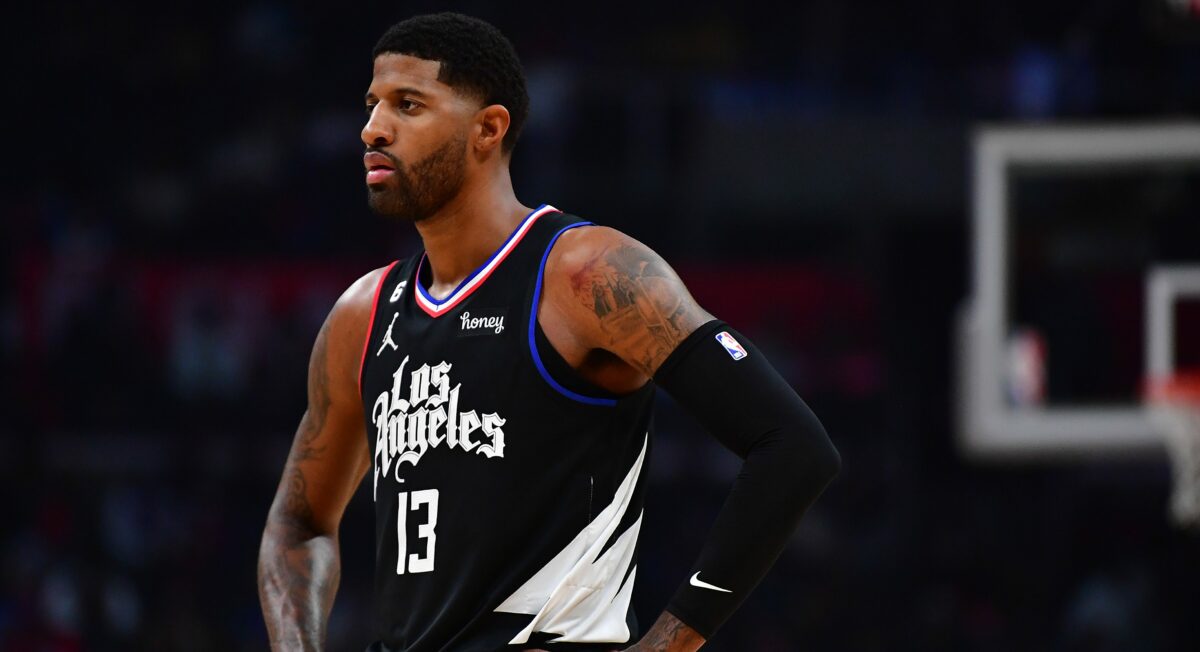Folks, we are nearly 24 hours into the NBA’s free agency period and…somehow, things feel quiet.
Sure, we got a few fireworks here and there between Paul George leaving for the Philadelphia 76ers and some of the other smaller deals made on the market so far.
But, by and large, most teams across the league seem to be taking their sweet time making things happen. On top of that, many of them (looking you, Nuggets and Clippers) seem content to let some of their best players simply walk out the door for nothing.
READ MORE: The winners and losers of day 1 of NBA free agency so far.
We’re used to teams wheeling and dealing early during free agency. Teams have also always been keen on keeping their own free agents — especially teams in contention.
So what gives? Why have things changed so drastically so far this offseason? The answer is the NBA’s new collective bargaining agreement and its new stringent “second apron.”
Wait. Second apron? What is that?

The NBA’s “second apron” is a new tax threshold added to the league’s latest collective bargaining agreement in April 2023. It was the first collective bargaining agreement negotiated by CJ McCollum, the President of the NBA Players Association.
In simpler terms, think of the second apron as the maximum limit on a credit card for an NBA team. Once a team goes over that limit, it gets hit with penalties that do two things:
- Require owners to make really expensive luxury tax payments that most of them hate paying and
- Make it way harder for teams to construct their rosters moving forward.
This is the first summer the new second apron rules have come into play so teams are playing it safe with their spending.
How much is the second apron threshold?
The second apron level is always a set amount above the NBA’s salary cap for the season. The NBA released a memo with all the pertinent numbers on it:
The National Basketball Association today announced that the Salary Cap has been set at $140.588 million for the 2024-25 season. The Tax Level for the 2024‑25 season is $170.814 million. pic.twitter.com/DdjoGhcAsz
— NBA Communications (@NBAPR) June 30, 2024
- The salary cap is set at $140.58 million
- The first apron level is set at $178.13 million
- The second apron level is set at $188.93 million
If a team crosses that $188.93 million mark, it gets hit with those second apron penalties.
What are the penalties for crossing the second apron threshold?
Crossing the first apron is already pretty costly for teams trying to make improvements. Once the first threshold is crossed, teams can no longer acquire players via sign-and-trade.
They also aren’t allowed to use trade exceptions or take more salary back in trades, so they wouldn’t be able to trade for a player that makes more than the one they trade away. They also aren’t allowed to sign waived players during the regular season that had salaries over $12.9 million.
The second apron gets much worse. All of the restrictions applied to the first apron teams still apply, but second apron teams are also not allowed to:
- Use the mid-level exception in any capacity
- Aggregate contracts sent out to other teams or make deals sending out straight cash to other teams
- Make sign-and-trade deals with their own free agents if their incoming salary still exceeds the second apron or use trade exceptions created from new trades
- Use a 2032 first-round pick in a trade if the team finishes the season still over the second apron limit.
You can see how much harder it gets to make roster improvements when you cross that second apron threshold.
So that’s why so many teams are just letting free agents walk?

Yes, exactly. These teams are already so expensive with massive contracts on the books even before they sign any free agents.
Teams like the L.A. Clippers, Denver Nuggets, Golden State Warriors, and more avoided the second apron by letting key free agents walk. At the same time, though, they made major sacrifices to their teams. The Clippers lost an All-Star in Paul George. The Nuggets lost a key starter in Kentavious Caldwell-Pope. The Warriors are losing an integral piece of the team’s DNA in Klay Thompson. All of this is happening to avoid these new penalties.
Are there more changes coming?
Absolutely. This is only the first summer we’re seeing this. Next season, as the NBA wraps up its new television deal negotiations, we’ll probably see more change coming.
Because of this, NBA teams are taking a far different approach to team building than they used to. We’re seeing what that looks like this summer. Buckle in and get ready for more.
